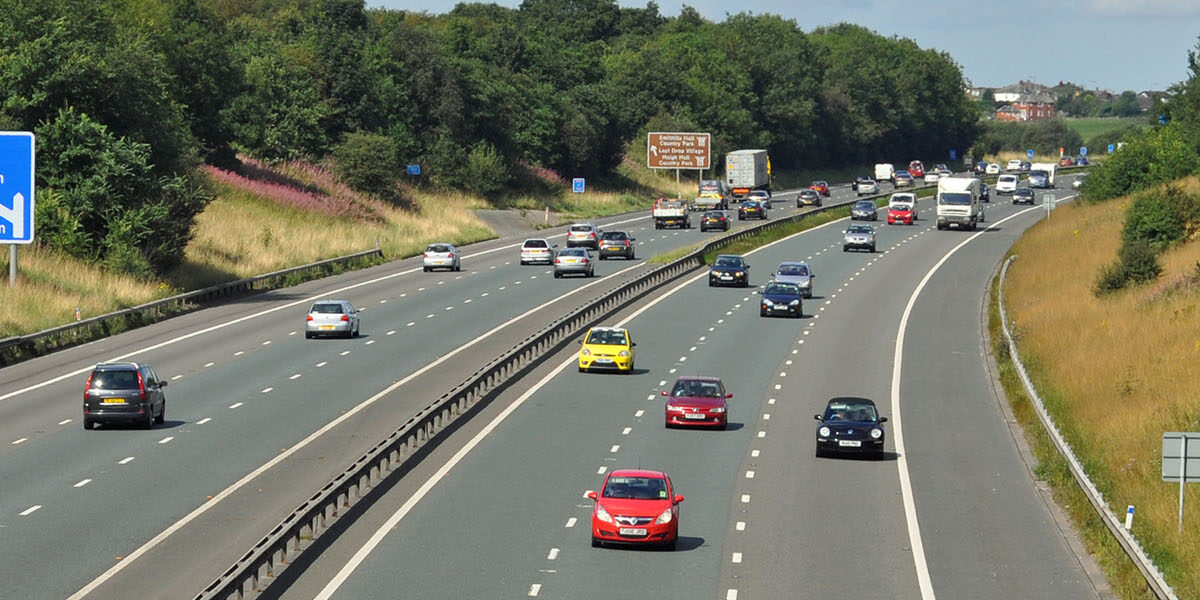Driving on multi-lane carriageways can be a daunting experience, especially for learner drivers. However, understanding how multi-lane carriageways work is not only essential for passing your driving test but also for maintaining road safety and efficient traffic flow. In this post, we’ll look into the laws and best practices of multi-lane carriageways.
Single carriageways v dual carriageways
Before we look at the specifics of multi-lane carriageways, it’s important to differentiate between single and dual carriageways. A single carriageway road is characterised by one, two, or more lanes within a single carriageway, without a central reservation to separate opposing traffic flows. Note that the presence of a central reservation is the key distinction between single and dual carriageways.
On the other hand, a dual carriageway features at least one lane of traffic moving in each direction, separated by a central reservation. In many cases, dual carriageways have multiple lanes in each direction.
Lane discipline: The key to safe driving
Maintaining proper lane discipline is paramount when driving on multi-lane carriageways. The higher speeds on these roads demand careful and rule-abiding actions. When driving on a two or three-lane dual carriageway, keep to the left-hand lane or middle lanes. Reserve the right-hand lane solely for overtaking or turning right. Always signal and check your mirrors before changing lanes, ensuring your manoeuvres are aligned with the highway code.
Joining a dual carriageway
Joining a dual carriageway requires caution.
- Accelerate along the slip road to match the speed of the traffic on the dual carriageway.
- Look for an appropriate gap to merge into the traffic as soon as you enter the slip road.
- Signal right to indicate your intention to fellow road users.
- Maintain focus primarily on the direction you’re heading, with quick glances to your right to assess the traffic. If traffic is heavy or there’s no immediate opening to merge, slightly reduce your speed until an opportunity arises.
During peak traffic periods, you might find yourself waiting behind the junction line for a suitable opening.
Exiting a Dual Carriageway
Exiting a dual carriageway involves a systematic approach. As you approach your intended exit, green countdown markers will guide you. The first sign displays three white slashes, indicating you’re 300 yards away from the exit. This is followed by two slashes (200 yards) and one slash (100 yards). Use these markers to initiate your exit procedure.
Begin by checking your mirrors and signaling left. Gradually reduce your speed as you enter the exit junction. Follow the exit road until you safely transition onto the appropriate route.
Crawler Lanes: A Safety Feature
Crawler lanes are predominantly found on roads with steep gradients. They’re designed for slower-moving vehicles such as buses or lorries, allowing faster traffic to pass unimpeded. If you encounter a crawler lane, be aware of its purpose and yield to faster vehicles.
Building Confidence on Multi-Lane Carriageways
While multi-lane carriageways might seem intimidating, practice is the key to mastery. If you’re apprehensive about driving on these roads during your learning journey, communicate your concerns with your instructor. Collaborate to improve your confidence and skills. If you’ve already passed your driving test but still feel uncertain about multi-lane carriageways, consider taking refresher lessons to enhance your abilities.
Resources for Deeper Understanding
For a comprehensive grasp of multi-lane carriageway rules and regulations, refer to the Highway Code section on the GOV.UK website. This valuable resource provides detailed insights into UK driving laws, ensuring you’re well-equipped for safe and confident driving on multi-lane carriageways.
In conclusion, multi-lane carriageways can be navigated smoothly with a solid understanding of the rules and best practices. Whether you’re a learner driver or a seasoned motorist, adhering to UK driving laws and cultivating proper driving habits is essential for a safe and enjoyable driving experience.
